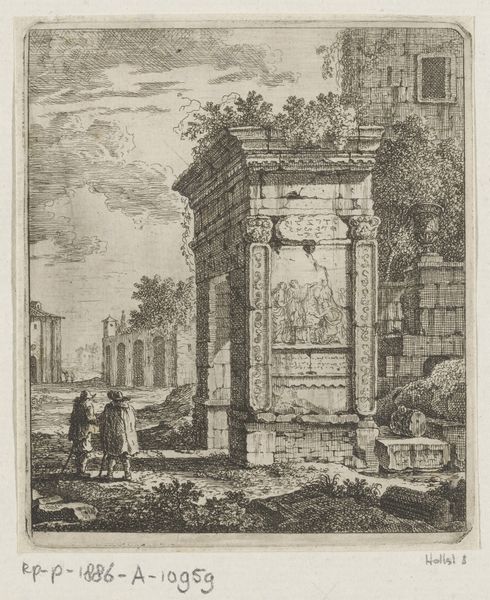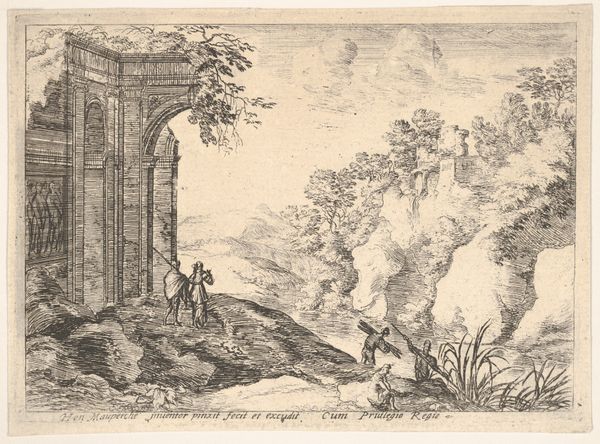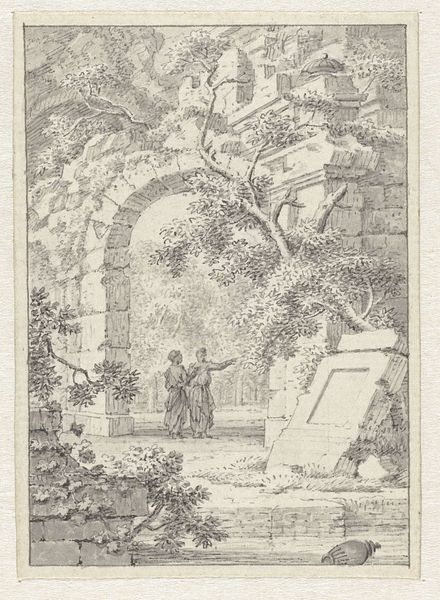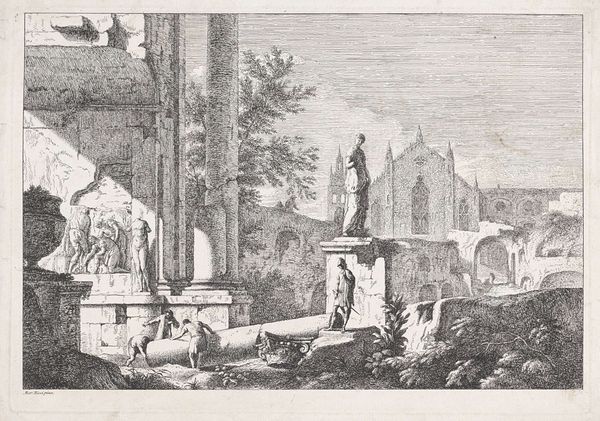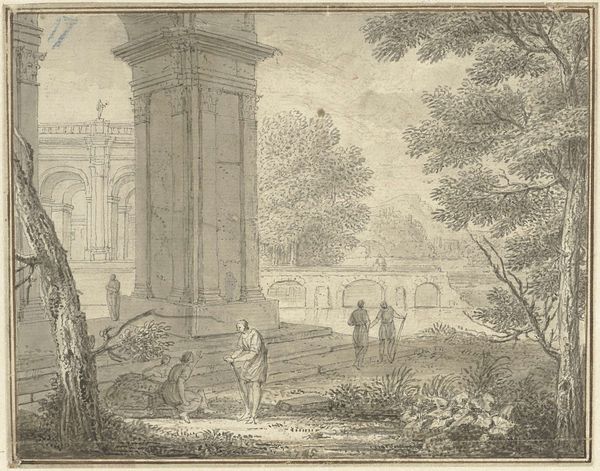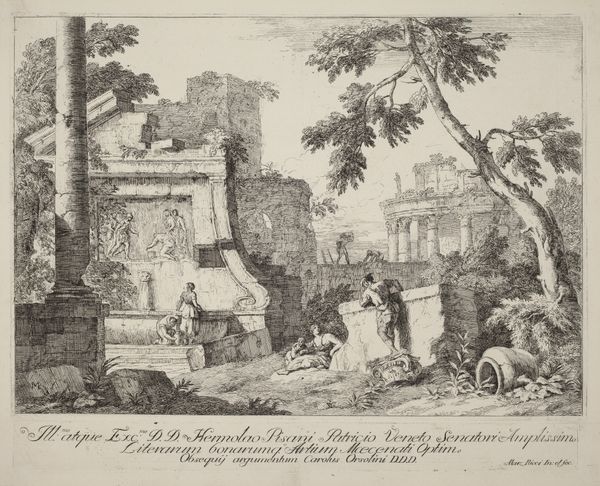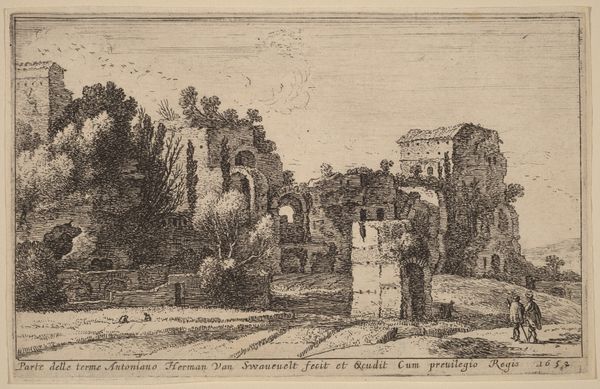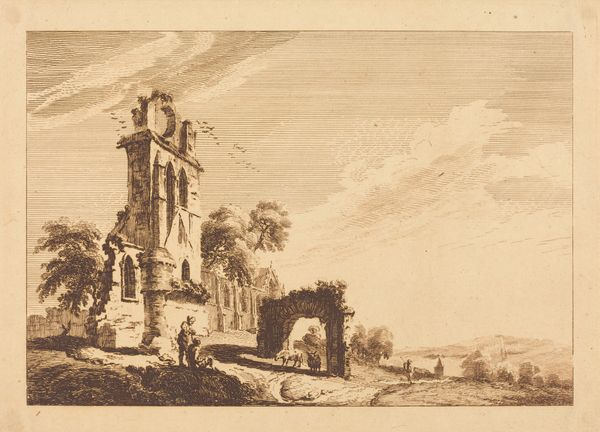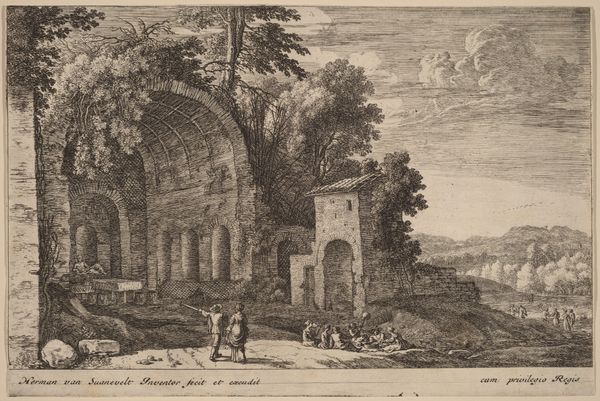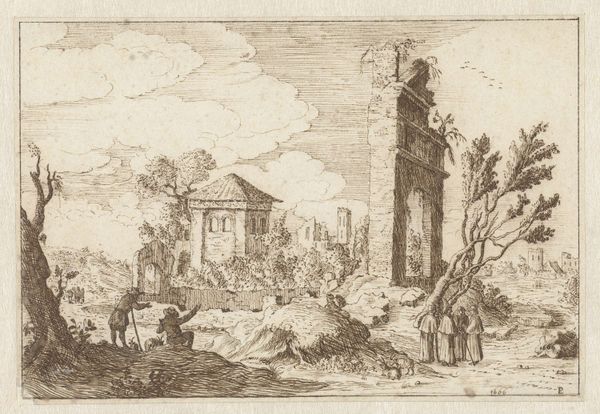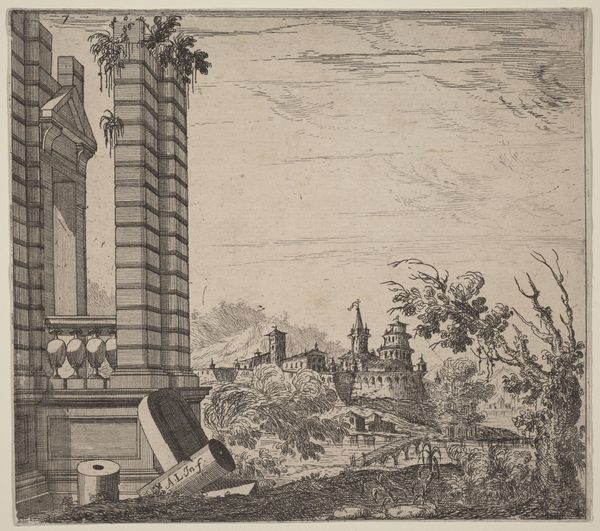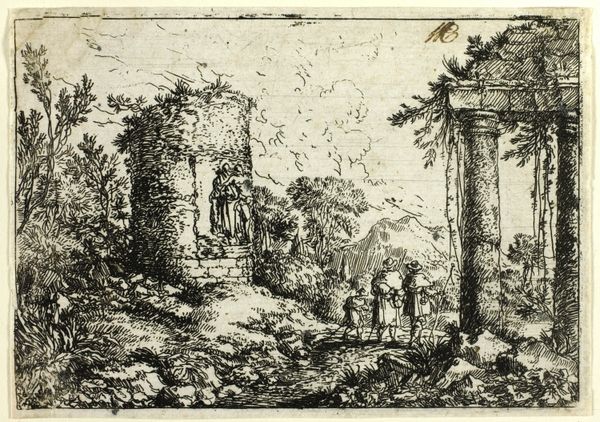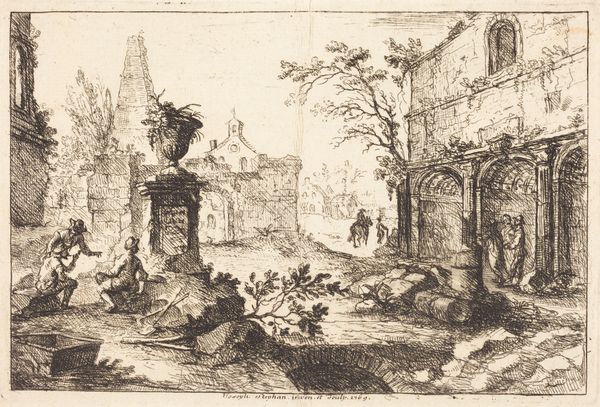
drawing, print, etching, ink
#
pen and ink
#
drawing
#
baroque
# print
#
etching
#
landscape
#
classical-realism
#
ink
#
cityscape
#
genre-painting
Dimensions: plate: 11.3 x 14.5 cm (4 7/16 x 5 11/16 in.) sheet: 11.9 x 15 cm (4 11/16 x 5 7/8 in.)
Copyright: National Gallery of Art: CC0 1.0
Jean Jacques de Boissieu created this etching, Triumphal Arch, in 1759. This print demonstrates the art of etching, a detailed process involving coating a metal plate with wax, drawing through the wax to expose the metal, and then submerging the plate in acid. The acid bites into the exposed lines, creating grooves that hold ink. Boissieu’s skillful technique creates a captivating image. Note the contrasts of light and shadow, achieved through the density and direction of etched lines. The rough texture of the stone, the delicate foliage, and the figures' clothing all emerge from this labor-intensive method. In the 18th century, prints like this were crucial for disseminating images, acting as a form of visual communication before photography. The labor involved in etching, from the artist’s hand to the printing press, connects directly to the work's value, highlighting the intersection of artistic skill and the burgeoning market for reproducible images. Recognizing this helps us appreciate the broader historical and economic context in which Boissieu operated, challenging any separation between art and craft.
Comments
No comments
Be the first to comment and join the conversation on the ultimate creative platform.
